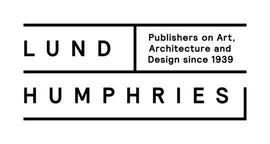Inside the National Museum of Qatar: Encountering Beauty
Karen Exell author of Lund Humphries book, The Global Spectacular, transports us to the exhibition galleries of The National Museum of Qatar: one of the many spectacular museums featured in her book.
~~~~~
The National Museum of Qatar (NMoQ) opened on the 27th March 2019 in Doha, Qatar. The now famous building designed by Jean Nouvel and inspired by the desert rose crystalline formation found in Qatar’s deserts belongs to the spectacular architecture trend led by architects such as Nouvel, Frank Gehry, Norman Foster and Zaha Hadid. This trend blossomed during the first two decades of the twenty-first century in particular in China and the Arabian Gulf, as discussed in my book, The Global Spectacular: Contemporary Museum Architecture in China and the Arabian Peninsula (Lund Humphries 2018). During this period, Qatar built its global reputation in part by strategically engaging with architects such as I. M. Pei (Museum of Islamic Art), Rem Koolhaas (Qatar National Library), Jean Nouvel (NMoQ) and Herzog & De Meuron (the planned Orientalist Museum). But what happens inside these buildings? What is the experience of the architecture from within and how successful is the actual function of the building, as a library or a museum? This piece discusses the Archaeology of Qatar gallery at NMoQ from the point of view of the visitor experience, a gallery selected as it presents a topic perhaps the most challenging to audience engagement, given the limited public knowledge of Qatar’s archaeological past.

NMoQ’s permanent galleries were also designed by the Jean Nouvel team working in close collaboration with the client team, ensuring that the narrative cleaved to the country’s history while its realisation worked in dialogue with the architecture. Central to the design concept was the use of large-scale art films, of which there are nine within the eleven permanent galleries. The museum’s internal architecture – discs slicing through the spaces, floor levels dipping and rising and no flat surfaces – gives rise to gallery spaces that flow organically into one another. The visitor enters the Archaeology of Qatar gallery at its central point, facing a series of tall clear glass showcases which run left and right down the spine of the curved space presenting archaeological finds from nine periods from 8000BCE to 1500CE. Projected on to the full breadth and height of the opposing curved walls, beyond the showcases, is a film by Iraqi-Irish artist and film-maker Jananne Al Ani that loops though sequences of aerial views of Qatar’s archaeological sites and micro-close-ups of the surfaces of some of the objects on display, blending the two into a visual meditation on Qatar’s landscapes of past and present, accompanied by a subtle soundtrack of helicopter blades referencing the aerial photography technique.
Aside from the film, the gallery presents over 3000 objects, large-scale replicas, oral histories, digital interactive exhibits and looping digital graphics, a hands-on interactive space, models, projections, text and graphics, within an architecture that cannot be ignored. Despite this multiplicity, the experience of the gallery space remains soothing: film and audio are choreographed to create a cohesive immersive visual and audio-scape while the materials and colours are harmonious – pale blonde sycamore wood models complement the beige of the stuc-pierre gallery walls and polished floors, the digital media design is deliberately muted using black screen backgrounds, and the clear glass showcases are produced through complex engineering, ensuring that there is no visible structure to distract the eye from the objects or the film.

NMoQ’s presentation foregrounds two interrelated elements: beauty – in terms of the design, materials and use of visual imagery – and emotion – joy, sadness or hope at certain moments in the Museum’s narrative, and, throughout, the creation of wonder. As Stephen Greenblatt (1990) noted in relation to history exhibitions, wonder is created when ‘the act of attention draws around itself a circle from which everything but the object is excluded…To be sure, the viewer may have purchased a catalogue, read an inscription on the wall… but in the moment of wonder, all of this apparatus seems mere static’ (1990, 23-28). In contrast, he defined a resonant exhibition as one that provides context through text or other means that may communicate the precarious and therefore culturally valuable nature of the object; he suggests that exhibitions which contain strong elements of resonance and wonder – ‘a wonder that leads to a desire for resonance’ – are more impactful, and even more so if the initial appeal is wonder (1990, 34); this is arguably the case in the Archaeology of Qatar gallery at NMoQ.
Observations of visitors within the gallery reveal a level of engagement with the archaeological artefacts that is surprising given their intrinsically unspectacular (if archaeologically significant) nature – visitors are drawn close to the objects in the central chronological display cases, hanging apparently in space in front of the film’s gently merging land- and surface-scapes. The muted audio soundscape of pulsing helicopter blades, an abstract score that shifts in time and space, enhances the immersive moment of encounter. For one full year NMoQ attracted hundreds of thousands of people from around the world to lose themselves in this immersive experience of unexpected beauty; this is now on hold since the arrival of COVID-19 in March 2020 to the Gulf.
Karen Exell 2020
Photographs © Sylvie van Roey
~~~~~
Greenblatt, Stephen. 1990. ‘Resonance and Wonder.’ Bulletin of the American Academy of Arts and Sciences 43 (4): 11-34.
This discussion is an edited extract from a chapter in development for the Handbook of Museum Archaeology (ed. Alice Stevenson; OUP, 2021)
~~~~~
Karen Exell's book, The Global Spectacular: Contemporary Museum Architecture in China and the Arabian Peninsula can be found here.
Hardcover • 128 Pages • Size: 250 × 190 mm
100 B&W illustrations and 50 colour illustrations
ISBN: 9781848222496 • Publication: May 08, 2018
You might also enjoy reading...
Other titles you might like...


